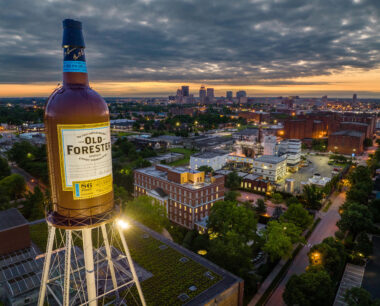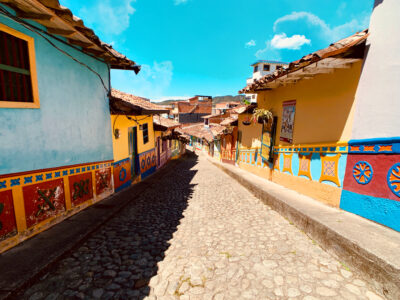
How to experience Taiwan’s Indigenous cultures
The last decade has seen many positive changes in how Taiwan treats its Indigenous peoples, whose cultures yield fascinating insights into island life…
While the dominant culture on the island of Taiwan is Mandarin Chinese, many Indigenous peoples have contributed to the island’s character. The Chinese only settled en masse in the 17th century, by which time its original Austronesian-descended inhabitants had been there for over 4,000 years. As such, a vast proportion of Taiwanese today have some Indigenous heritage.
In total, Taiwan has sixteen recognised ethnic groups, totalling over 550,000 people. This amounts to just 2.4% of the population, yet their influence on the island is far more than that suggests, not least through crafts, food and music – Abao being the most famous Indigenous singer.
For years, these peoples were marginalised, referred to as shanbao (mountain people); they were only named in the constitution as yuanzhumin (original inhabitants) in 1994. However, since President Tsai Ing-wen came to power, positive steps have been made. On 1 August (Indigenous People’s Day) in 2016, she made a formal apology: “For 400 years, every regime that has come to Taiwan has brutally violated the rights of Indigenous peoples through armed invasion and land seizure. For this, I apologise to the Indigenous peoples on behalf of the government.”
President Tsai also has a Paiwan grandmother and is the first Taiwanese leader to proclaim her ethnic heritage. In addition, 16 recognised Indigenous languages have now been adopted as national languages within Taiwan.
Visits to the coastal strip east of the central mountain ridge take you to the area populated by the largest Indigenous group on the island, the Amis. They are famed for their harvest festivals in the summer, with celebrations spanning around 40 communities during the months of July and August. Not all welcome uninvited guests (or women), but those that do claim a seat will witness age-old dances and rituals being passed down between generations.
In the mountains to the south of the island live the second-largest Indigenous group, the Paiwan. Traditional costumes and pottery typically feature their sacred totem: the so-called hundred-pace snake, a pit viper with a zig-zag design – its name comes from how far you will manage to walk after being bitten. A visit to Tjuvecekadan in Pingtung County reveals a wealth of traditional slate houses, whose preservation, alongside the 400-year-old village’s customs and traditions, offer a living glimpse of Paiwanese history.
Other memorable encounters include the Bunun, who are known for their polyphonic singing in up to eight parts. They inhabit the central mountains and their music is the most remarkable of all the Indigenous groups. Elsewhere, on Lanyu (Orchid Island), you’ll encounter the Yami (or Tao) people, who are the only Indigenous Taiwanese to use traditional canoes; they have preserved their traditions incredibly well despite a long period under Japanese occupation. These are just some of many unique encounters.
Here are six Indigenous experiences to have in Taiwan
1. Shung Ye Museum of Formosan Aborigines

The hundred-pace snake motif is common across Paiwanese relics, and it is said that the creature is the ancestor of their nobles (Simon Broughton)
Close to the National Palace Museum in capital Taipei, this collection gives a superb overview of Taiwan’s Indigenous peoples, who had inhabited Taiwan at least 4,000 years before Chinese settlement in the 17th century. There is lots of background information on early life on the island, exploring how Taiwan’s Indigenous peoples originally subsisted on farming, hunting and fishing; there’s also a section on the headhunting customs that lasted until the 1930s. Visitors will find some excellent exhibits, including a Tao boat, Paiwan pottery, beads, dwellings and lots of costumes, plus there are some good recordings of Indigenous music. But what is missing – not just in the museum, but Taiwan in general – is a concise book in English about the distinctive Indigenous cultures to be found here. museum.org.tw
2. Taiwan Indigenous Peoples Culture Park

A performance of traditional drumming at the Taiwan Indigenous Peoples Culture Par (Alamy)
Established in 1985, this is the best of Taiwan’s cultural villages, which are essentially outdoor museums, though some even incorporate amusement parks. Located in Beiye village, Pingtung County, this park in the south-west of the country contains examples of the houses of different communities, a museum of Indigenous sculpture, regular performances and several walking trails. There are Indigenous villages nearby, plus the park is in touch with local artists and musicians. maolin-nsa.gov.tw/en/04000089.html
3. Food

The Paiwanese specialty of cinavu eschews rice for taro (Simon Broughton)
While rice is a staple of Chinese food, millet, yams and taro feature more highly in Indigenous cuisine. Foraging also plays a traditional role: the Amis in particular collect jungle leaves and a mushroom called ‘lovers’ tears’, named because it grows in the mountain gullies after rainfall. Quite chewy, they taste strong and bitter. A Paiwan speciality is cinavu, which typically consists of pork and taro wrapped and cooked in leaves. It’s a tasty snack. There are numerous restaurants serving Aboriginal food around the country; for instance, Badasan in Taipei’s coastal Bali district is a good option, as are Gulu Gulu and Urban Aboriginal Tribe Restaurant, both in Taichung City.
4. Pasiwali Festival
A popular two-day festival of Indigenous music is held in October in the city of Taitung, on the south-eastern coast of the island. Pasiwali is an Amis word, meaning ‘go to the east’; the bands are contemporary and urban rather than traditional, attracting a youthful audience.
5. Kuba meeting houses

The Kuba meeting house of the Tsou people (Alamy)
The unique thatched kuba are traditional meeting houses for the men of the Tsou people. They are beautiful structures, found in the villages of Dabang and Tefuye, which are situated close together, near Alishan in the central mountains. The Mayasvi Festival, honouring warriors and gods, is usually held on 15 February outside the kuba, alternating each year between the two villages.
6. Harvest Festivals

Amis locals dancing during the harvest festival (Shutterstock)
Nothing beats getting invited to a harvest or new year’s festival, such as Masalut (Paiwan) or Ilisin (Amis). You can hear local music and see a village dressed in its traditional finery. They usually take place in July and August, though dates vary from village to village. The Hualien County Joint Aboriginal Harvest Festival has become quite a large event and allows visitors; the county’s population is 30% Indigenous, with the majority being Amis, but also Bunun, Kavalan, Sakizaya, Sediq and Truku.



















